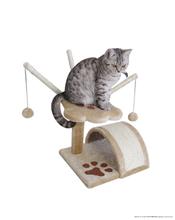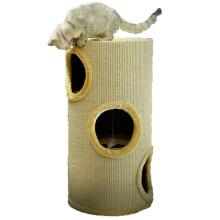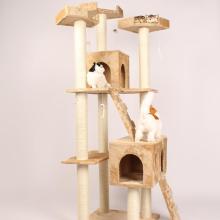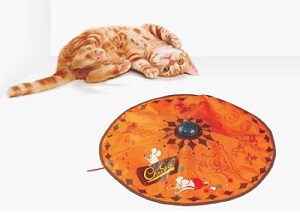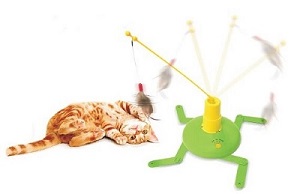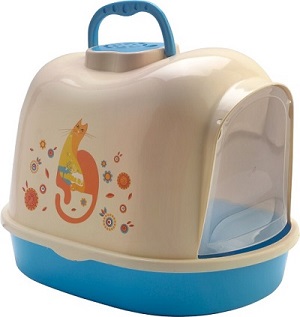In recent years, techniques such as injection, extrusion, and winding have been continuously developed. The rubber roller forming and vulcanizing equipment has gradually enabled the production of rubber rollers to be mechanized and automated. The effect of the rubber roller on the whole machine is very huge, and the process operation and production quality are extremely strict. Many of its products have been classified as fine products. The selection of rubber and plastic materials and the control of product dimensional accuracy are the key factors. The rubber surface of the rubber roller must not contain any impurities, trachoma and air bubbles, and there must be no difference between scars, defects, grooves, cracks, and local sponges and soft and hard. For this reason, it is required that during the entire production process of the rubber roller, absolute cleanliness and fine work must be maintained to achieve uniform operation and standardization of technology. The combination of rubber plastics and metal cores, bonding and injection molding, vulcanization and grinding processes are all high-tech processes.
Over the years, the production of rubber rollers has made the mechanization and automation of the process equipment difficult because of the variety of products' non-fixedness and size. So far, most of them are based on discontinuous manual operation lines. Recently some of the larger professional manufacturers have begun to achieve continuous production from rubber to molding and vulcanization processes, which has doubled production efficiency and greatly improved the working environment and labor intensity.
First, rubber material preparation
For rubber rollers, compounding is the most critical link. The types of rubber used in rubber rollers range from natural rubber and synthetic rubber to special materials up to more than 10 kinds. The rubber-containing rate is 25% to 85%, and the hardness is soil (0 to 90) degrees, which spans a very large range. Therefore, how to make these rubber compounds even has become a big problem. The conventional method is to use an open mill for mixing and processing in the form of various master batches. In recent years, companies have switched to more intermeshing mixers and made rubber compounds by sub-mixing.
After the rubber material is evenly mixed, the filter is used to remove the impurities in the rubber material. Then use a calender, an extruder, and a laminator to make a film or stripe without bubbles and impurities for molding the roller. Prior to molding, these films and strips are subjected to a rigorous visual inspection, which defines the period of parking, the maintenance of fresh surfaces and the prevention of blocking and squeezing. Because most of the rubber rollers are non-embossed products, once the impurities and bubbles are present on the surface rubber, blisters may appear when the surface is ground after vulcanization. This will cause the entire rubber roller to be repaired and even scrapped.
Second, molding
Roller molding is mainly used for pasting coating rubber on metal cores, including wrapping, extrusion, molding, injection and injection. At present, the domestic market is dominated by mechanical or hand-bonded molding, and most of the foreign countries have achieved mechanical automation. Large and medium-sized rubber rollers basically adopt profile extrusion and are produced by continuous extrusion molding of extruded film or continuous winding of extruded tape. At the same time, in the molding process, the size and appearance of the machine are automatically controlled by a microcomputer, and some of them can also be formed by a right angle and special extrusion method of the extruder.
The above molding method can not only reduce labor intensity but also eliminate bubbles that may be generated. In order to prevent the rubber roll from being deformed in vulcanization and prevent the generation of air bubbles and sponges, the flexible roll press method is particularly used on the outside of the roll formed by the wrapping method. Generally, several layers of cotton or nylon cloth are wrapped around the outer surface of the rubber roller, and fixed and pressed with steel wire or fiber rope. Although this process has long been mechanized, it also requires the removal of the binder after vulcanization to form a “cecum†process that complicates the manufacturing process and results in a very limited use and high consumption of wrapping cloth and wrapping ropes. waste.
For small and micro-rubbers, various manufacturing processes such as manual patching, extrusion nesting, injection molding, injection and casting can be used. In order to increase the production efficiency, molding methods are now mostly used, and the accuracy is much higher than that of non-molding methods. Solid rubber injection, injection and liquid rubber casting have become the main production methods.
Third, vulcanization
At present, the vulcanization method of large and medium-sized rubber rollers is still the vulcanization of the vulcanizing tanks. Although the flexible pressure mode has been changed, it has not yet escaped the heavy labor burden of transporting the unloading and unloading. Sulfide heat sources include steam, hot air, and hot water. The main stream is still steam. Due to the contact of the metal core with the water vapor and the special requirements of the rubber roller, the use of indirect steam vulcanization, the time to be extended 1 ~ 2 times, generally used in the hollow iron core roller. For special rubber rollers that cannot be vulcanized with a vulcanizing tank, hot water vulcanization is sometimes used, but the treatment of water pollution remains to be solved.
In order to prevent rubber and metal core from different shrinkage caused by the difference between the rubber roller and rubber core delamination occurs, the general vulcanization more slowly using temperature and pressure, the vulcanization time is much longer than the rubber itself required curing time . Large rubber roller to achieve uniform internal and external vulcanization and the thermal conductivity of the metal core and rubber, stay in the tank is often up to 24 ~ 48h, about 30 to 50 times the normal rubber curing time.
The small and micro-rubbers have now mostly been changed to the vulcanizing press of a vulcanizing press, which has completely changed the traditional vulcanizing method of the rubber roll. In recent years, the injection molding machine has also been used for die casting, vacuum sulfiding, and the die can be opened and closed automatically, the degree of mechanization and automation is greatly improved, and the curing time is short, the production efficiency is high, and the product quality is good. Especially when the rubber injection molding vulcanizer is used, the two processes of forming and vulcanization are combined into one, and the time can be shortened to 2 to 4 minutes, which has become an important direction for the production and development of rubber rollers.
At present, the liquid rubber represented by polyurethane elastomer (PUR) has developed rapidly in the production of rubber rollers, and has opened up new ways for material and process revolutions. It uses a cast form to remove complex molding operations and bulky vulcanization equipment, greatly simplifying the production process of the rubber roll. However, the biggest problem is that the mold must be used. For a large rubber roll, especially for a single product, the production cost is greatly increased, and it is very difficult to promote the use.
In order to solve this problem, in recent years, there has been a new process of moldless manufacturing of PUR rubber rollers. It uses polyoxypropylene ether polyol (TDIOL), polytetrahydrofuran ether polyol (PIMG) and diphenylmethane diisocyanate (MDl) as raw materials, rapidly reacts after mixing and stirring, and quantitatively casts it onto the slowly rotating rubber roller metal core. , Step by step to achieve the edge of the cast edge curing, the final formation of rubber roller. This process not only has a short flow, a high degree of mechanization and automation, but also saves bulky molds, and can produce rubber rollers of various sizes according to requirements. This greatly reduces the cost and has become the main development direction of PUR rubber rollers. .
In addition, the use of liquid silicone rubber for the production of office automation equipment in the world, the use of micro-fine roller is also developing rapidly. They are divided into two major categories of heat curing (LTV) and room temperature curing (RTV), and the equipment used is also different from the above PUR to form another type of casting. Here, the most critical issue is how to control and reduce the viscosity of the rubber to maintain a certain pressure and extrusion speed.
Fourth, surface treatment
Surface treatment is the last and most critical process in the production of rubber rollers. The state of surface grinding directly affects the performance of the rubber roller. At present, there are many methods for grinding, but they are mainly mechanical turning and grinding. For this reason, grinding methods, grinding tools, and abrasives used are very important. Many companies regard it as a technical decision and maintain their attitude of being unprofessional. One of the biggest problems is how to solve the rubber heat generation during grinding and maintain the best deflection of the surface after grinding.
In addition to grinding the surface of the rubber roll, it must be thoroughly cleaned to remove the surface attached to the powder, the higher the surface is required to further polishing, and some in the surface coated with resin paint, latex paint, magnetic powder , electrostatic powder and so on. At the same time, it is also possible to electroplate one layer of the desired coating, or perform chemical oxidation treatment, etc., in order to achieve the purposes of light perception, corrosion resistance, magnetization, and conductivity.
With the continuous development of the rubber roller, the coating technology on the surface of the rubber roller has also been rapidly improved. Now, the traditional method of changing the performance of the rubber roller by coating the rubber has begun. Specifically, the coating is used to change and impart new properties to the roller. For example, the use of calenders, blade coaters, and the addition of oil barriers to increase oil resistance, etc., although the shape and material of the rubber rollers are the same as before, their functions have undergone great changes, and some have changed. Functional roller, this kind of surface treatment technology will have very promising future.
In summary, the rubber rollers used in production today have formed a series of products with unique technologies. Although the domestic market is still dominated by traditional products, the technological content is continuously improving. Many products have entered the high-tech field, and the added value has gradually increased. It is becoming another economic highlight in industrial rubber products.
Taixing Xinhua Rubber Roll Manufacturing Co., Ltd. Address: No. 72 Huangxi Road, Hezhen Town, Taixing City, Jiangsu Province, China
